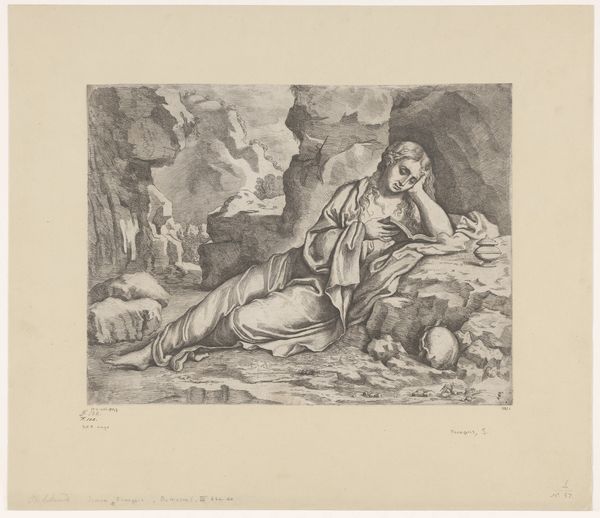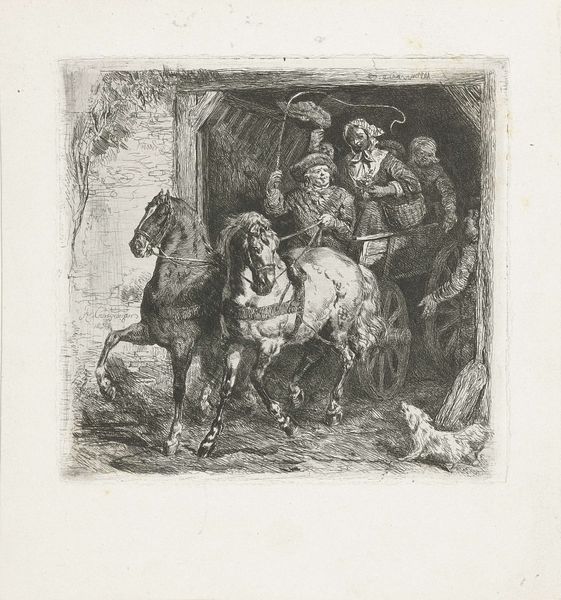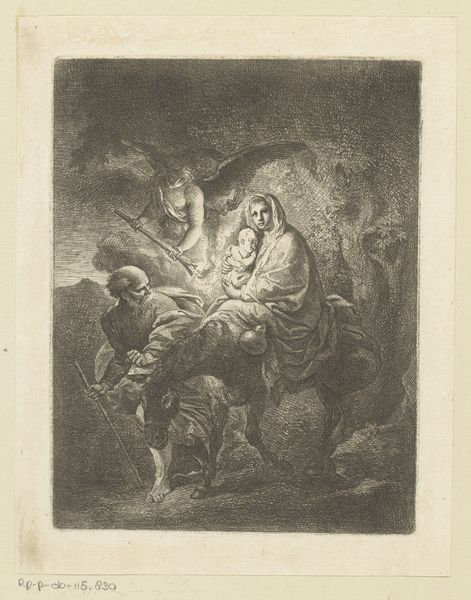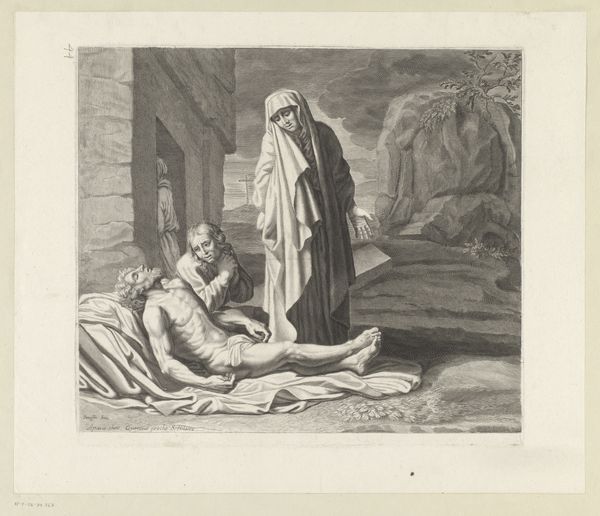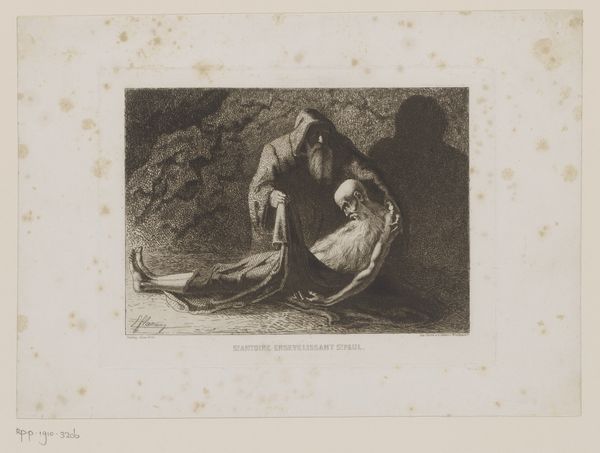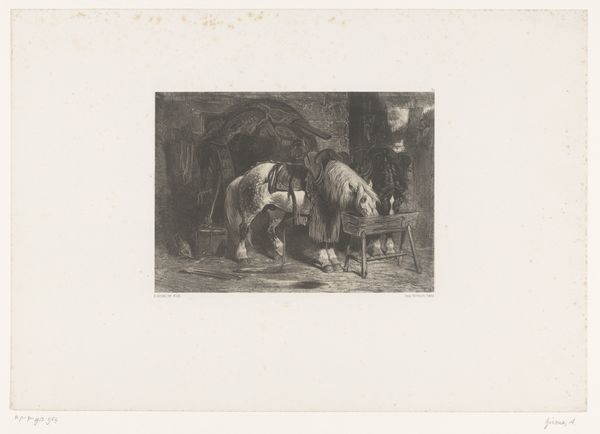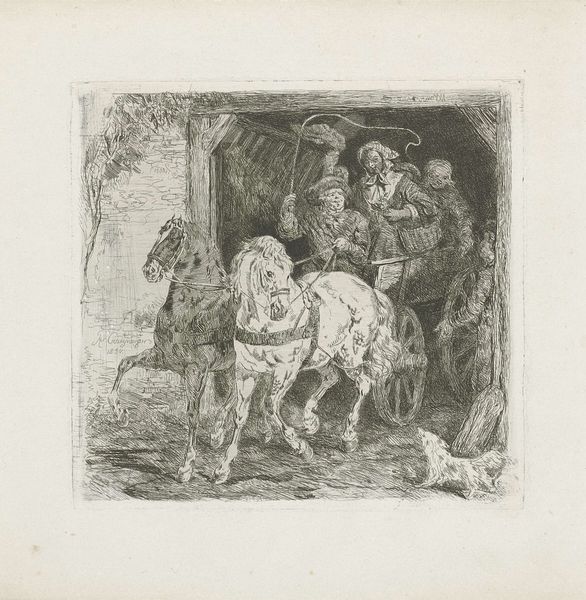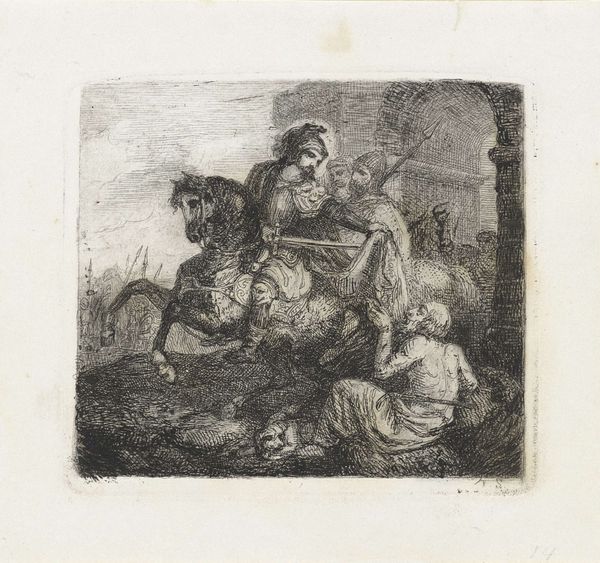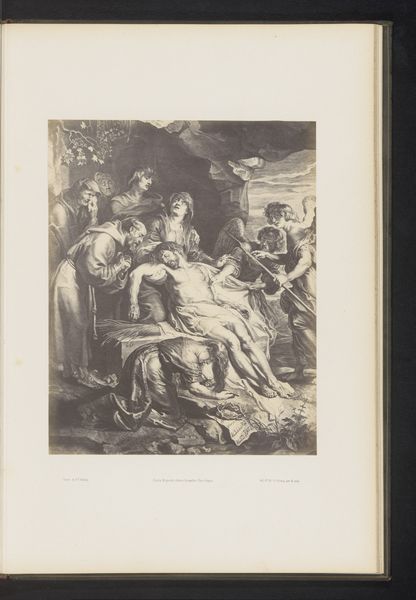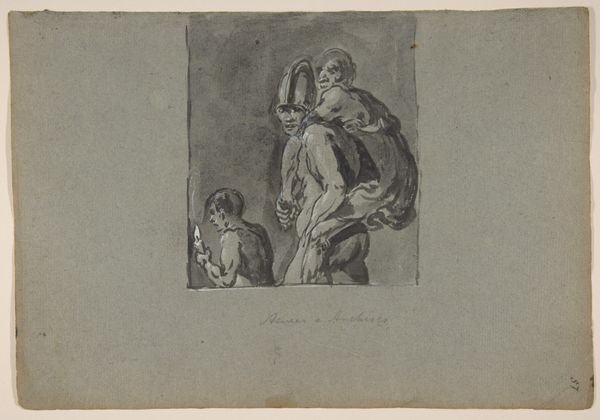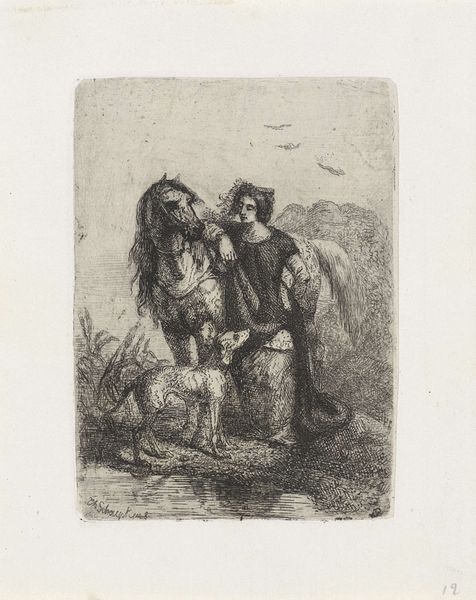
print, etching
#
narrative-art
#
baroque
# print
#
etching
#
old engraving style
#
landscape
#
history-painting
Dimensions: height 142 mm, width 186 mm
Copyright: Rijks Museum: Open Domain
Christian Wilhelm Ernst Dietrich created this etching, Vlucht naar Egypte, using metal, acid, and ink. Notice the composition of etched lines, which are not as free-flowing as those in a drawing. This is because the artist had to apply a waxy ground to a metal plate, then scratch through it with a needle, exposing the metal. When the plate was immersed in acid, the exposed lines were bitten, creating grooves. Ink was then applied to the plate, and the surface wiped clean, leaving ink only in the etched lines. Finally, the plate was pressed onto paper, transferring the image. In Dietrich’s time, etching allowed for the relatively efficient production of images. It democratized art, making it available beyond the elite. The sharp lines and tonal range achieved through hatching gave the print a unique aesthetic quality, distinct from painting or drawing. Thinking about process gives us a fuller picture, connecting the artist’s hand to broader social and economic contexts.
Comments
No comments
Be the first to comment and join the conversation on the ultimate creative platform.

